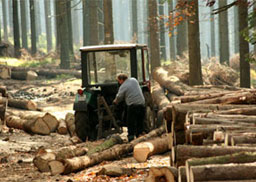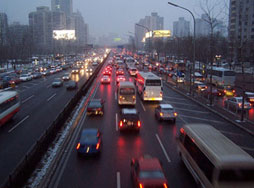Carbon is the fourth most abundant element on Earth and is a major component of all organic compounds. In fact, carbon is such a key ingredient of living tissue and the ecosystems that life on Earth is often described as “carbon-based life.”
Carbon can be found in the following four main reservoirs:
How carbon moves between the areas is known as the carbon cycle. The carbon cycle is an example of a biogeochemical cycle.
![]() Watch this video to learn more about the carbon cycle.
Watch this video to learn more about the carbon cycle.
Source: Carbon Cycle Cartoon, International Climate Champions, YouTube
![]() Let’s see what you have learned. Label the Carbon Cycle Diagram. Click on the correct question mark to match the descriptions on the image map.
Let’s see what you have learned. Label the Carbon Cycle Diagram. Click on the correct question mark to match the descriptions on the image map.
Take out a piece of paper and explain how the pictures below have altered the carbon cycle.
 |
 |
Sources for the images as they appear from top to bottom: